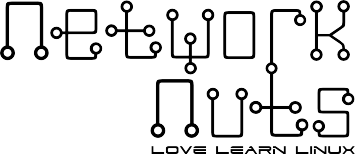Summer Training 2020
Are you looking to learn new skills? Is Python, Data Science, Artifical Intelligence, Devops & Cloud Computing something that interests you? Join us for summer training and learn every important and rising technology from industry experts.
Learn from the best
We understand the value of your time and money. This training is delivered only through industry experts with more than 18 years of experience in their respective fields. We have different experts for different technologies which makes it a unique experience for you.
What will you learn?
Network Nuts believes there is a thin gap between education and information, this training will ensure that you get quality education and not information.
1. Linux
- Access systems and get help
Log in to local and remote Linux systems, and investigate problem resolution methods provided through Red Hat Insights and support. - Navigate file systems
Copy, move, create, delete, and organize files while working from the bash shell. - Manage local users and groups
Create, manage, and delete local users and groups and administer local password policies. - Control access to files
Set Linux file system permissions on files and to interpret the security effects of different permission settings. - Manage SELinux security
Protect and manage the security of a server by using SELinux. - Tune system performance
Evaluate and control processes, set tuning parameters, and adjust process scheduling priorities on a Red Hat Enterprise Linux system. - Install and update software packages
Download, install, update, and manage software packages from Red Hat and yum package repositories. - Manage basic storage
Create and manage storage devices, partitions, file systems, and swap spaces from the command line. - Control services and the boot process
Control and monitor network services, system daemons, and the boot process using systemd. - Manage networking
Configure network interfaces and settings on Red Hat Enterprise Linux servers. - Analyze and store logs
Locate and accurately interpret logs of system events for troubleshooting purposes. - Implement advanced storage features
Create and manage logical volumes containing file systems and swap spaces from the command line, and configure advanced storage features with Stratis and VDO. - Schedule future tasks
Schedule tasks to automatically execute in the future. - Access network-attached storage
Access network-attached storage, using the NFS protocol. - Manage network security
Control network connections to services using the system firewall and SELinux rules.
2. Cloud Computing
- Introduction to Cloud Computing
- Setting up a Virtual Data Center
- Security & IP Addresses in AWS
- Virtual Private Network
- Block Storage
- AWS Object Storage
- Virtual Machine Types in AWS
- Identity & Access Management
- Load Balancing
- Route 53 Functions
- AWS Database Service
- AWS versus other cloud providers
3. Python
- Creating Your First Program in Python
- Data Types: Classifying Data in Python
- Implementing Input and Output Operations
- Operators: Performing Logical and Mathematical Operations
- Statements: Controlling the Flow of Program
- Strings: A Sequence of Characters
- Arrays: Arranging Similar Objects Systematically
- Implementing Functions in Python
- Lists and Tuples: Managing Data Systematically
- Dictionaries and Other Data Structures
- Recursion and Algorithms in Python
- Implementing OOPs Concepts, Classes and Objects
- Implementing Inheritance in Python
- Implementing Polymorphism in Python
- Interfaces and Abstraction in Python
- Handling Files I/O
- Handling Errors and Exceptions
4. Machine Learning
- Data Preprocessing
- Regression: Simple Linear Regression, Multiple Linear Regression, Polynomial Regression, SVR, Decision Tree Regression, Random Forest Regression
- Classification: Logistic Regression, K-NN, SVM, Kernel SVM, Naive Bayes, Decision Tree Classification, Random Forest Classification
- Clustering: K-Means, Hierarchical Clustering
- Association Rule Learning: Apriori, Eclat
- Reinforcement Learning: Upper Confidence Bound, Thompson Sampling
- Natural Language Processing: Bag-of-words model and algorithms for NLP
- Deep Learning: Artificial Neural Networks, Convolutional Neural Networks
- Dimensionality Reduction: PCA, LDA, Kernel PCA
- Model Selection & Boosting: k-fold Cross Validation, Parameter Tuning, Grid Search, XGBoost
5. Artifical Intelligence
- Q-Learning Intuition
- Q-Learning Visualization
- Deep Q-Learning Intuition
- Deep Q-Learning Implementation
- Deep Q-Learning Visualization
- Deep Convolutional Q-Learning Intuition
- Deep Convolutional Q-Learning Implementation
- Deep Convolutional Q-Learning Visualization
- A3C Intution
- A3C Implementation
- A3C Visualization
Not just training
We conduct in-training quizes to ensure all our students are are able to grasp the topics. We also provide the option of online training during harsh weather or if you are not available due to personal reasons.

